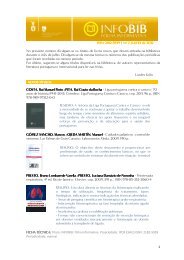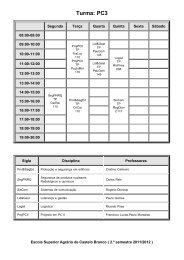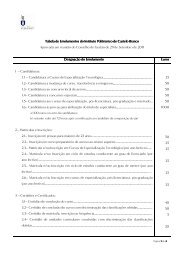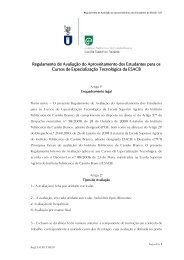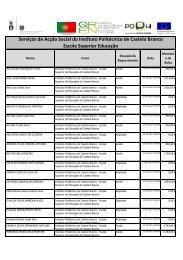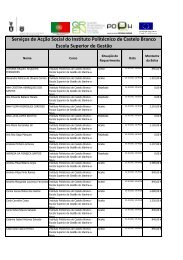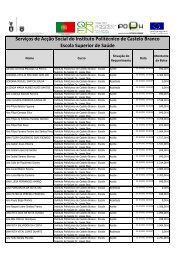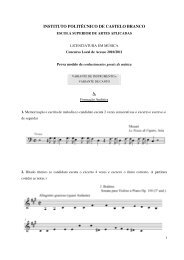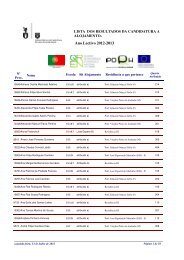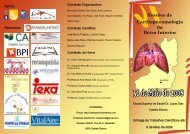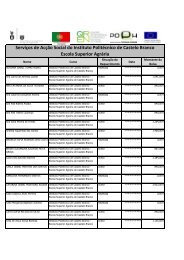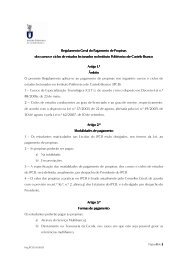N.º 24 - PDF - Instituto Politécnico de Castelo Branco
N.º 24 - PDF - Instituto Politécnico de Castelo Branco
N.º 24 - PDF - Instituto Politécnico de Castelo Branco
Create successful ePaper yourself
Turn your PDF publications into a flip-book with our unique Google optimized e-Paper software.
6<br />
7<br />
7<br />
6<br />
Intensive programme 2007/08: Eurhorticola:<br />
New approaches on horticultural training<br />
in the European Community<br />
Development of Medicinal and Aromatic Plants [MAP]<br />
Fernanda Delgado <strong>de</strong> Sousa*<br />
Introduction<br />
Since the end of the 20th century, the European markets<br />
and particularly the one of the North of Europe have a<br />
growing <strong>de</strong>mand of medicinal and aromatic plants (MAP).<br />
The consumers’ interest for polifontional species has been<br />
a reality in growth. A same species or genera of this group<br />
of plants can possess a series of uses: to feed, perfume,<br />
ornamental, cosmetics and pharmaceutical.<br />
The growing search of products of natural origin as alternative<br />
to the use of synthesis products easy to obtain but<br />
with a semi craft labour, it has constituted a hard incentive<br />
for the <strong>de</strong>velopment of larger produced volumes and marketed<br />
of aromatic and medicinal plants as well as a <strong>de</strong>mand<br />
in new ways vegetables of bioactive products. These<br />
last ones they are used so much in the domain of the health<br />
as in other sectors where are used that respect the ambient<br />
like phytopharmaceutical products.<br />
There are literally hundreds of medicinal and aromatic<br />
plants used in European herbal industry. The French pharmacopoeia,<br />
for example, lists 421 plants that it consi<strong>de</strong>rs as valued<br />
sources of herbal medicine. As a consequence, the safety<br />
and quality of herbal medicines have become increasingly important<br />
concerns for health authorities and public alike.<br />
One in each five patients consume medicinal<br />
plants,60-70% of the patients don’t reveal to the doctor /<br />
pharmacist because: consi<strong>de</strong>r natural product as innocuous<br />
and have fear.<br />
The figure 1 shows the increasing in the world market<br />
of products to the base of Plants.<br />
The largest market is Europe, being responsible for<br />
38% of the world market.<br />
values ($ US billion)<br />
10<br />
9<br />
8<br />
7<br />
6<br />
5<br />
4<br />
3<br />
2<br />
1<br />
0<br />
8.9<br />
1.5<br />
1.6<br />
3.8<br />
4.5<br />
1.8<br />
Figure 1 - World market of products to the base of Plants<br />
2.4<br />
2.2<br />
Europe Norrth America Japan Asia Rest of World<br />
The European country with the largest consumption slice<br />
is Germany, being responsible for 50% of the European<br />
2.9<br />
2.7<br />
2.2<br />
5.1<br />
0.5<br />
0.8<br />
1.5<br />
1.8<br />
1994<br />
1997<br />
1999<br />
2002<br />
n.º <strong>24</strong> Ano 18, 2010 5




